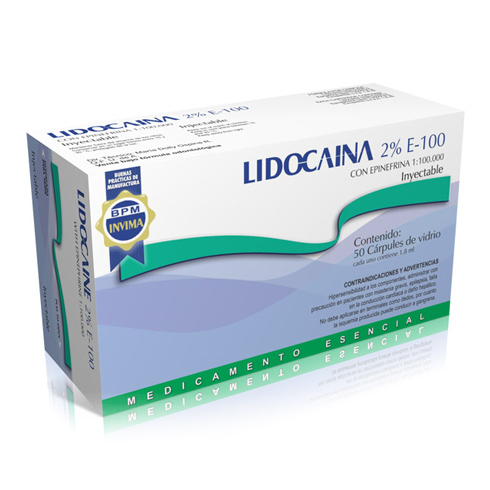Lidocaína 2% E-100
Lidocaine is the best anesthetic agent. It is indicated to produce local anesthesia when applied through infiltration or nerve block. It has a rapid, deep, and extended anesthetic action. It allows working in the most delicate dental procedures such as preparation of stumps in live teeth, pulpectomies, and chirurgical treatment of periodontitis.
The non-ionized ratio and the diffusion capacity of this anesthetic decrease in presence of an acid pH.
Epinephrine causes local vasoconstriction which restricts the absorption of the anesthetic, prolongs its action and diminishes its systemic toxicity. In doses currently applied in dentistry, this substance is completely atoxic and produces very scarce allergic reactions.
[acf_tabs_general]





